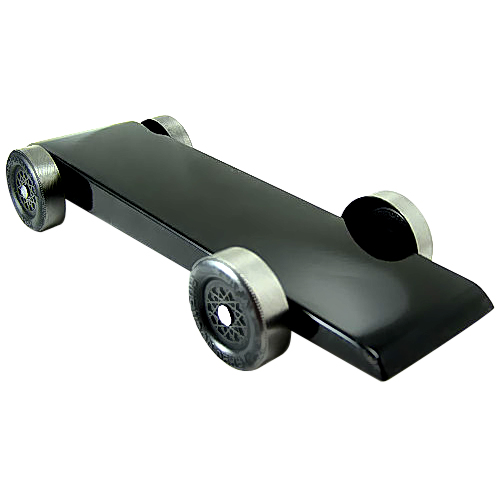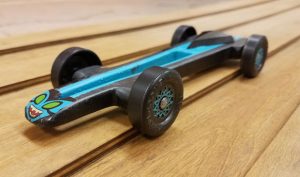Are you ready to take the pinewood derby to the next level? Crafting the best pinewood derby car design is an art form that combines creativity, precision, and engineering prowess. Whether you’re a seasoned competitor or a newcomer to the world of pinewood derby racing, finding the winning design that will take you to victory is no easy task. But fear not, as we delve into the secrets of what makes a pinewood derby car truly exceptional, you’ll discover the key elements that will give you the edge over your opponents.
From sleek aerodynamics to the perfect weight distribution, every aspect of your car’s design plays a crucial role in its performance on the track. The best pinewood derby car design is not just about looking good; it’s about finding the perfect balance between speed and stability. In this article, we will explore the science behind creating a winning design, examine different strategies and techniques used by experienced racers, and provide you with practical tips and tricks to help you build a pinewood derby car that will leave your competitors in the dust. So, buckle up and get ready to unlock the secrets to crafting the ultimate pinewood derby car design that will have everyone talking and bring home the trophy.
Best Pinewood Derby Car Design: The key to a winning pinewood derby car design is to reduce friction and maximize weight distribution. Start by shaping the car with an aerodynamic design and sanding it smooth. Add weight to the rear of the car for better traction. Use polished axles and wheels to reduce friction. Finally, make sure to test your car before the race to make any necessary adjustments for optimal performance.

Introduction
In this informative article, we will guide you through the process of creating the best pinewood derby car design. The pinewood derby is a popular racing event where participants build small, wooden cars and compete against each other. With the right design and construction techniques, you can maximize your car’s speed and performance. Whether you’re a beginner or an experienced racer, this article will provide you with step-by-step instructions and valuable tips to help you create a winning pinewood derby car.
Step 1: Planning Your Design
The first step in creating a great pinewood derby car is to plan your design. Before you start cutting and shaping the wood, take some time to brainstorm and sketch out your ideas. Consider factors such as aerodynamics, weight distribution, and overall aesthetics. Look for inspiration in car designs from real-life racing events or create something unique of your own. Make sure to follow the specific rules and regulations of your pinewood derby competition when planning your design.
Once you have a clear vision of your car’s design, you can start gathering the necessary materials. Ensure you have a block of pinewood, sandpaper, paints, and decals. Additionally, you may need weights, axles, and wheels, depending on the rules and specifications of your race. With all the materials at hand, you’re ready to move on to the next step.
Step 2: Shaping and Sanding
Now that you have your design planned out and all the materials ready, it’s time to shape and sand your pinewood derby car. Use a coping saw or a bandsaw to cut out the basic shape of your car from the block of pinewood. Be careful and precise during this step to ensure your car’s dimensions match your design.
Once you have the rough shape, use sandpaper to smooth out the edges and refine the contours. Start with a coarse-grit sandpaper and gradually move to finer grits for a polished finish. Sanding is crucial as it helps reduce friction and drag, which can greatly impact your car’s speed. Take your time and pay attention to detail to achieve the best results.
Step 3: Adding Weight and Balance
Weight distribution plays a significant role in a pinewood derby car’s performance. To optimize speed, it’s essential to add weight strategically. Most competitions have weight restrictions, so make sure to stay within the allowed limits. Consider placing the weights towards the rear of the car to increase the potential energy and enhance the car’s acceleration.
Test the balance of your car by placing it on a flat surface. If it leans to one side, adjust the weight distribution until it sits evenly. This will prevent unnecessary friction and ensure a straighter, faster race down the track. Remember to secure the weights tightly to avoid any shifting during the race.
Step 4: Attaching the Wheels and Axles
The wheels and axles are critical components of your pinewood derby car. Proper installation and alignment are necessary for optimal performance. Start by inserting the axles into the pre-drilled holes in the car’s body. Ensure they are straight and secure. Lubricate the wheels using graphite or specialized lubricants to minimize friction.
When attaching the wheels, make sure they are aligned parallel to each other and perpendicular to the car’s body. Use a ruler or a wheel alignment tool for accuracy. The smoother the wheel rotation, the better the car’s speed. Double-check the tightness of the wheels and axles to avoid any wobbling or misalignment during the race.
Step 5: Fine-Tuning and Testing
Before the big race, take some time to fine-tune your pinewood derby car. Make any necessary adjustments to the weight distribution, wheel alignment, or overall balance based on your testing and previous trial runs. Small tweaks can make a significant difference in performance.
Once you’re satisfied with your car’s design and functionality, it’s time to hit the track. Participate in practice races and gather valuable data on your car’s performance. Analyze the results and make further adjustments if needed. Remember, testing and fine-tuning are crucial steps in achieving the best pinewood derby car design.
Frequently Asked Questions
Here are some commonly asked questions about the best pinewood derby car design:
What factors should I consider when designing a pinewood derby car?
When designing a pinewood derby car, there are several factors to consider. Firstly, the weight of the car is crucial. It’s important to find the right balance between a lightweight design for speed and a heavier weight to increase momentum. Secondly, the shape and aerodynamics of the car can greatly affect its performance. Smooth, streamlined designs tend to have less air resistance and therefore can achieve higher speeds. Lastly, the type of wheels used and their alignment can impact the car’s stability and straight-line performance.
In summary, consider the weight, shape, and aerodynamics, as well as the wheels and alignment, when designing a pinewood derby car for optimal performance.
What are some tips for making a fast pinewood derby car?
To make a fast pinewood derby car, there are a few tips to keep in mind. Firstly, focus on reducing friction. This can be achieved by sanding and polishing the axles and wheels to ensure they are smooth. Additionally, lubricating the wheels with graphite can further reduce friction. Secondly, strive for a lightweight design. Remove any excess wood from the car body and use lightweight materials for accessories. Lastly, ensure that the wheels are aligned properly and that the car is balanced to prevent any unnecessary drag or wobbling.
By following these tips, you can increase the speed of your pinewood derby car and improve its chances of winning the race.
What are the advantages of using tungsten weights in a pinewood derby car?
Tungsten weights are commonly used in pinewood derby cars due to their numerous advantages. Firstly, tungsten is a dense material, meaning that a small amount can add a significant amount of weight to the car. This allows for precise weight distribution and control, which is crucial for optimizing the car’s performance. Secondly, tungsten has a high melting point, making it resistant to heat. This is particularly important if you plan on using power tools to shape or modify the car. Lastly, tungsten weights are compact and can be easily concealed within the car body, ensuring a sleek and aerodynamic design.
Overall, tungsten weights offer the benefits of precise weight control, heat resistance, and compactness, making them an excellent choice for pinewood derby car designs.
What are some creative design ideas for pinewood derby cars?
When it comes to pinewood derby car designs, the possibilities are endless. Here are a few creative ideas to consider: Firstly, you can create a themed car based on your favorite movie, TV show, or sports team. This allows you to incorporate unique colors, logos, and graphics into your design. Secondly, you can experiment with unconventional shapes and forms. For example, you could design a car that resembles an animal or a futuristic spaceship. Lastly, you can add special effects such as LED lights or moving parts to make your car stand out from the competition.
Remember to balance creativity with functionality, ensuring that your design doesn’t compromise the car’s performance. With some imagination, you can create a pinewood derby car that is both visually impressive and fast on the track.
Is it necessary to paint a pinewood derby car?
While painting a pinewood derby car is not necessary, it can enhance the overall appearance and make your car more visually appealing. Painting allows you to add colors, patterns, and designs that reflect your personal style or match a specific theme. Furthermore, painting can help protect the wood from moisture and other environmental factors that may affect the car’s performance.
However, it’s important to note that excessive paint or a heavy paint job can add unnecessary weight to the car, potentially slowing it down. If you choose to paint your car, ensure that you use minimal layers and lightweight paint. Additionally, consider using a clear coat to protect the paint and maintain the car’s aerodynamics.

It is clear that designing the best pinewood derby car is not merely a matter of chance or luck, but rather a combination of skill, knowledge, and dedication. Aspiring builders can take inspiration from the numerous winning designs and techniques shared by experienced racers, while also adding their unique touch to make their car stand out. Whether it is through the use of innovative shapes, eye-catching paint jobs, or intricate detailing, the best pinewood derby car design is a testament to the builder’s passion and determination.
As pinewood derby enthusiasts continue to push the boundaries of what is possible, it is exciting to imagine the future of this beloved tradition. With advancements in technology and materials, we can anticipate even more impressive designs and record-breaking speeds. However, at its core, the pinewood derby is not just about winning; it is a celebration of craftsmanship, sportsmanship, and community. So, whether you are a seasoned racer or a first-time builder, remember to enjoy the journey, learn from every race, and above all, have fun!
- How to Rejuvenate Wood Veneer - April 20, 2024
- How to Fix Water Damage on Wood Coffee Table - April 20, 2024
- How to Fix Water Damaged Swollen Wood Furniture - April 20, 2024